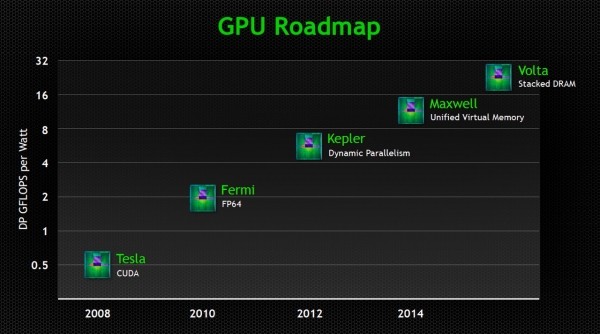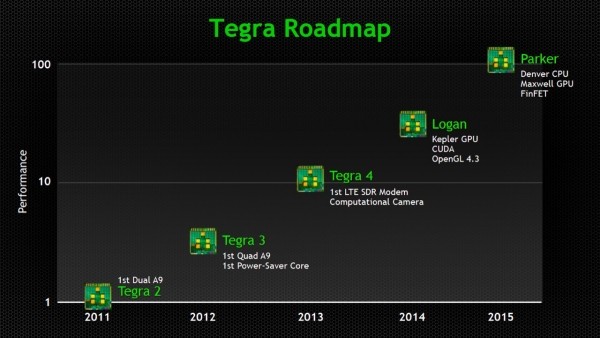Nvidia has updated its public GPU roadmap, revealing new details about upcoming products including a graphics solution that will purportedly offer about four times the memory bandwidth of the new $1,000 GeForce GTX Titan. Codenamed "Volta," the GPU family is expected to arrive sometime after 2014's Maxwell refresh, presumably in 2016 judging by Nvidia's typical two-year architecture refresh cycle.

Speaking at the 2013 GPU Technology Conference in San Jose, CA yesterday, Nvidia CEO Jen-Hsun Huang promised that Volta would be able to deliver memory bandwidth of 1TB/s by stacking the card's RAM right on top of the GPU – a technique Nvidia is currently calling "stacked DRAM." Along with greatly boosting performance, mounting RAM directly on the GPU should reduce the card's overall footprint.
It might be tough to get excited about something that's still four years out, but Nvidia's next-gen Maxwell architecture is expected to appear next year with some tricks of its own, most notably "unified virtual memory," which will allow a machine's CPU to access a GPU's memory and its GPU to access system memory – reminiscent of AMD's plans to unify memory via its Heterogeneous Systems Architecture (HSA).

It's unclear how these technologies will decide which processor is tapping what memory when and why, but the idea is that a CPU could benefit from a GPU's snappy GDDR chips during high priority loads, while a GPU could leverage the capacious DDR system memory when speed isn't really a top concern. It's easy to see the benefit of both scenarios assuming the functionality is implemented well.
Nvidia also covered its plans for Tegra. After this year's Tegra 4 launch, the company expects to deliver a refresh in 2014 codenamed "Logan," and another in 2015 dubbed "Parker." The former will pack a Kepler-based GPU, support CUDA 5 and OpenGL 4.3, and offer up to three times the speed of existing parts. Samples are slated to ship later this year and mass production is set for the first quarter of 2014.

Meanwhile, the latter carries a Maxwell-based GPU and its 64-bit CPU will stem from "Project Denver," an Nvidia initiative revealed in 2011 that set out to build custom CPU cores based on ARM's architecture – not unlike Apple's A series chips and Qualcomm's Snapdragon range. Parker will also use a FinFET manufacturing process and some say it will use a 16nm fabrication, though this isn't confirmed.